Rugged cliffs, misty skies, and windswept coastlines define a place few travelers have yet to experience—nestled between Iceland and Norway, the Faroe Islands offer raw, untouched beauty that feels worlds away from crowded European destinations. This remote archipelago rewards those who venture off the beaten path with dramatic hiking trails, puffin-dotted sea stacks, and waterfalls that plunge straight into the ocean. Whether you’re drawn by its Nordic charm, the slow rhythm of village life, or otherworldly landscapes, this travel guide reveals how to plan the ultimate journey to one of Europe’s most extraordinary hidden gems—before the rest of the world catches on.
Quiet Village Escape on Nólsoy Island

Just a short ferry ride from Tórshavn transports travelers to a different pace of life. Nólsoy Island feels untouched by time, with colorful homes, narrow lanes, and a peaceful energy woven through its quiet village streets. Unlike the larger islands, there’s no vehicular traffic here—residents and guests walk, bike, or simply meander. The island’s silence is only broken by seabirds, wind, or the friendly chatter of locals offering directions or stories. Wandering through the village reveals traditional turf-roofed homes and a harbor framed by weather-worn boats. Hikers often use Nólsoy as a base for reaching the lighthouse at Borðan or for birdwatching during puffin season. There’s also the famed legend of Ove Joensen, who rowed solo from Nólsoy to Denmark—his legacy celebrated at a local museum. Simplicity defines the experience, making Nólsoy a treasured retreat for travelers craving solitude, authenticity, and raw Atlantic beauty. With no commercial buzz or tourist crowds, this village provides a real connection to Faroese culture and landscape. Whether sipping tea by the harbor or setting off along the coastal trails, Nólsoy invites visitors to slow down and absorb the untouched charm that defines the Faroe Islands at their quietest and most sincere.
Dramatic Cliffs & Floating Lake at Trælanípan

Sweeping sea views and vertical cliffs converge spectacularly at Trælanípan, one of the Faroe Islands’ most photographed natural marvels. Situated on Vágar Island, this plateau leads to the illusion of Sørvágsvatn Lake floating above the ocean—a geological trick of perspective that has gone viral across travel platforms. The hike to Trælanípan takes about 45 minutes each way and rewards with windswept ridges, seabird sightings, and panoramic drama. The cliff name, translating to “Slave Cliff,” echoes the area’s darker past, where Viking-era enslaved people were said to have been pushed into the Atlantic. Today, it’s a place for reflection, adrenaline, and awe. Photographers and nature lovers alike find the scene mesmerizing, especially at sunrise or sunset when light plays across the water and basalt formations. The trail is well-marked but exposed, so windproof gear and sturdy shoes are essential. For those chasing bucket-list vistas, Trælanípan delivers cinematic scenery without requiring extreme effort. The contrast of calm lake and roaring waves below captures the raw duality of the Faroe Islands—beauty and power side by side. Whether you’re after striking photos or a meditative hike, this cliffside spectacle is a must-see.
Hike to Remote Álvastakkur Bird Cliffs

A remote coastal gem tucked along Suðuroy’s dramatic western edge, Álvastakkur rewards intrepid hikers with one of the most untouched cliffscapes in the Faroes. The journey begins near Sandvík and requires a moderate trek over uneven, sometimes boggy terrain. As the trail ascends, sweeping Atlantic views give way to towering bird cliffs teeming with seabirds like puffins, guillemots, and fulmars. The cliffs themselves rise vertically from the ocean, their raw basalt layers chiseled by centuries of wind and waves. Few tourists make it out this far, making Álvastakkur a peaceful sanctuary for nature enthusiasts and photographers. There’s no infrastructure or guided signage—just open land, rugged coastline, and nature at its most untamed. In spring and summer, the cliffs become a haven for nesting birds, providing a front-row seat to one of the Faroes’ most spectacular natural cycles. Travelers are advised to tread carefully, keeping a safe distance from unstable cliff edges and respecting the wildlife. This hike demands more effort than most but delivers an unfiltered experience of the islands’ wilder spirit. For those seeking solitude and raw coastal beauty, Álvastakkur offers an unforgettable escape deep into the Faroese wilderness.
Surf & Kayak the Fjords’ Hidden Channels
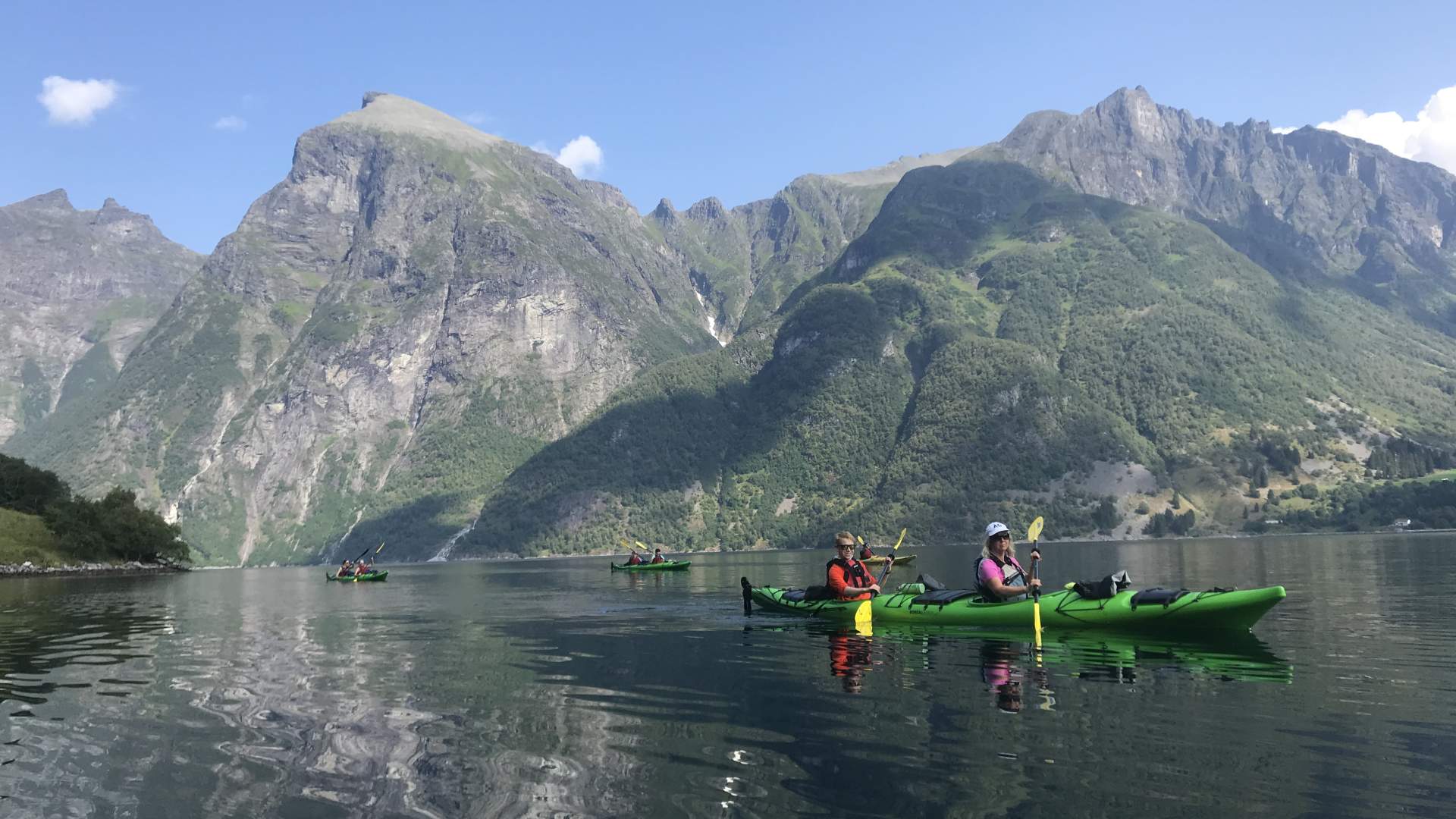
Paddling along the intricate waterways and sheltered fjords of the Faroe Islands offers a fresh perspective that land-based hikes can’t match. Kayaking through these hidden marine corridors—particularly near Norðdepil, Fuglafjørður, or the northern stretches of Streymoy—reveals caves, sea arches, and cliffs unreachable by foot. Waters are generally calm within fjords, making them ideal for beginners and experienced paddlers alike. Meanwhile, for those with a taste for adventure, surfing opportunities await near Tjørnuvík, where waves roll in from the North Atlantic. This beach has become a niche spot for cold-water surfers who favor solitude over crowds. Rental equipment and guided tours are available through local operators, ensuring safety and insight into marine ecology and history. While kayaking allows close encounters with seabirds and occasional seals, surfing tests endurance against powerful swells and chilly temperatures. Thermal wetsuits are essential year-round. Whether gliding silently past cliff faces or balancing on wind-churned surf, these water-based activities bring travelers even closer to the elements. There’s a visceral thrill in navigating the Faroes from sea level—feeling the spray, spotting puffins overhead, and sensing the islands’ raw energy from below.
Marvel at Múlafossur Waterfall Cascading into Ocean

Framed by soaring cliffs and the quiet village of Gásadalur, Múlafossur Waterfall is one of the Faroe Islands’ most iconic landmarks. What sets it apart is its dramatic plunge from a grassy cliff directly into the ocean, a rare spectacle that feels straight from a fantasy novel. The view was once accessible only by hiking over mountain passes—until a tunnel opened in 2006, making Gásadalur and its majestic waterfall reachable by road. The scene has since captured the hearts of photographers and travelers seeking surreal, cinematic moments in nature. Surrounded by sheep-dotted meadows and turf-roofed homes, the falls flow year-round, their volume swelling after rains. Sunrise and sunset cast particularly magical light across the water and cliffs, amplifying the dreamlike effect. While the area is well-known, it never feels crowded. Visitors often sit in silence, soaking in the roar of the water and the endless horizon beyond. It’s a place to pause, reflect, and remember how nature can move both water and emotion. Whether it’s a quick photo stop or a lingering moment of awe, Múlafossur delivers one of the most unforgettable views in the Faroes.
Wander Ancient Farmhouse Ruins in Kirkjubøur

Tucked along Streymoy’s southern coast, Kirkjubøur is more than a historic village—it’s a portal to the Faroe Islands’ medieval past. This coastal hamlet houses some of the country’s most significant cultural landmarks, including the partially restored Magnus Cathedral from the 1300s and the still-inhabited Roykstovan farmhouse. Believed to be one of the oldest wooden houses still occupied in the world, Roykstovan has been home to the same family for 17 generations. Visitors can walk among the turf-roofed structures, with views extending over the ocean to nearby islands. Stone walls, ancient inscriptions, and weathered beams tell stories of Viking farmers, Catholic bishops, and seafaring settlers. There’s a hushed reverence to the village—modern life fades as you trace the paths once trodden by chieftains and clergy. While small in size, the spiritual and historical weight of Kirkjubøur resonates deeply. Those interested in Faroese heritage, Norse roots, or simply a quiet, meaningful escape will find the experience here deeply rewarding. The landscape—open fields, rough shoreline, and fog-draped ruins—only enhances the atmosphere. A walk through Kirkjubøur isn’t just sightseeing; it’s stepping into centuries of living memory still present in stone and timber.
Drive Through the World’s First Underwater Roundabout
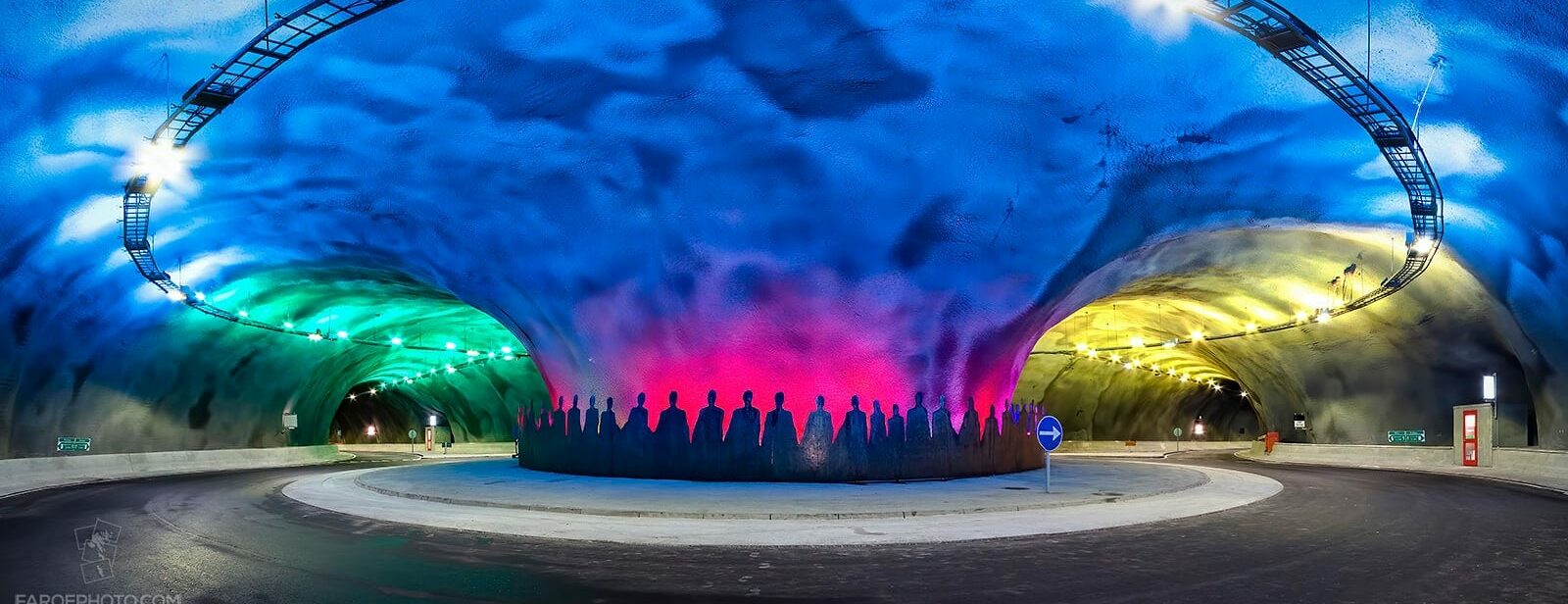
Nowhere else on Earth can drivers loop beneath the ocean floor through a luminous underwater sculpture. Opened in 2020, the Eysturoyartunnilin links Streymoy to Eysturoy and houses the world’s first underwater roundabout—a 72-meter-wide masterpiece designed by artist Tróndur Patursson. This engineering marvel spans over 11 kilometers beneath the sea and transforms a routine commute into a surreal journey. The center of the roundabout glows with sculptural lights and reflects the movement of passing vehicles like rippling currents. For locals, it slashes travel time; for visitors, it offers an unforgettable brush with innovation fused with art. The tunnel’s walls feature colorful metallic fins symbolizing ocean waves and Faroese mythology. While it’s part of essential infrastructure, it has become an attraction in its own right, drawing design enthusiasts, architecture buffs, and curious travelers. The drive is smooth, safe, and otherworldly, with traffic flowing efficiently through its modern layout. Audio tours and guided routes highlight the story behind its construction and symbolic meaning. The roundabout not only connects islands but also reflects the Faroe Islands’ commitment to marrying function with creativity in even the most unexpected places.
Visit Kalsoy’s Iconic Kallur Lighthouse via Tunnel Hike

Sheer cliffs, a winding trail, and sweeping ocean views lead the way to one of the Faroe Islands’ most celebrated icons—Kallur Lighthouse. Located at the northern tip of Kalsoy Island, this secluded beacon perches dramatically atop a grassy ridge, framed by plunging drop-offs on either side. Reaching it involves a ferry from Klaksvík followed by a narrow drive through several single-lane tunnels carved into Kalsoy’s mountainous spine. The hike itself is moderate but exposed, winding uphill from the village of Trøllanes. Along the way, hikers often pause to absorb panoramic views that feel pulled from cinematic landscapes. Wind conditions can be intense, and the cliffs demand caution, but the reward is immense. At the summit, the lighthouse stands like a sentinel between sky and sea—remote, resilient, and wildly photogenic. Many recognize the location from films and travel spreads, yet it retains its sense of solitude. Puffins nest along the cliffs during summer, and visibility often stretches across multiple islands. Kallur Lighthouse isn’t just a viewpoint—it’s a journey that encompasses adventure, nature, and the thrill of reaching a legendary outpost at the edge of the world.
Puffin Safari & Wildlife Boat Tours

Offshore excursions offer a rare window into the dynamic marine life and towering cliffs of the Faroe Islands, with puffin safaris and wildlife boat tours among the most popular. These guided experiences depart from harbors such as Vestmanna, Sørvágur, or Klaksvík and venture into fjords and open sea to approach dramatic rock walls teeming with seabirds. Puffins, with their comical beaks and flapping wings, nest by the thousands during late spring and summer. Boats glide silently near the cliffs, giving passengers unparalleled views of puffin colonies, guillemots, kittiwakes, and even the occasional seal or dolphin. The Vestmanna bird cliffs are especially renowned for their height and biodiversity, making them a favored route. Tours vary in length and intensity—some opt for serene glides under sheer basalt cliffs, while others include stops at sea caves or remote islets. Expert guides share folklore, bird ecology, and stories from Faroese seafaring history. Rain or shine, the sight of puffins launching from cliff ledges or bobbing on the water is unforgettable. These tours bring visitors face-to-face with one of the North Atlantic’s most vibrant and accessible bird spectacles, offering raw beauty from a rarely-seen angle.
Relax in Turf-Roofed Cottage at Gjógv or Gásadalur
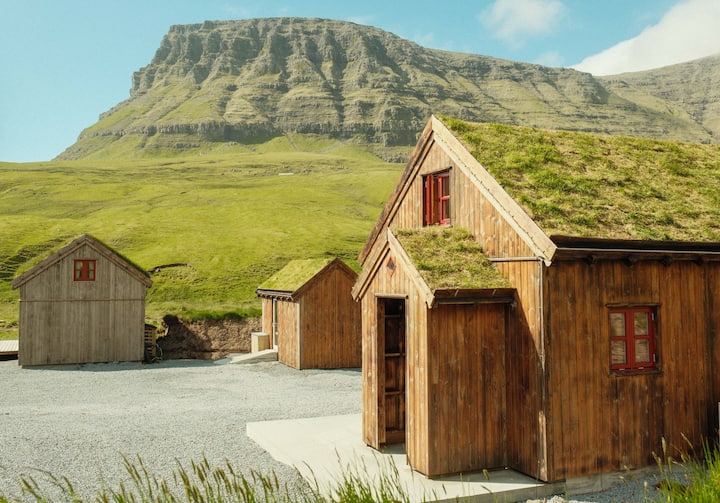
Staying in a traditional turf-roofed cottage offers a unique opportunity to feel the rhythm of island life firsthand. In villages like Gjógv and Gásadalur, visitors can rent restored stone homes topped with thick grassy roofs—built to withstand winds and retain warmth year-round. These cottages blend seamlessly with the landscape, looking as though they’ve grown from the hills themselves. Inside, expect a mix of rustic charm and modern comfort: wool blankets, wood stoves, and handmade furnishings sit alongside contemporary kitchens and Wi-Fi. From Gjógv, one can walk to the natural sea gorge that gives the village its name, while Gásadalur offers close access to the famed Múlafossur waterfall. Both villages are peaceful, slow-paced, and framed by towering cliffs and open sea. Sunrise coffee on the porch, sheep wandering past, and skies that shift dramatically by the hour make the experience feel cinematic yet grounding. These stays are more than accommodation—they’re immersion. They offer the quiet luxury of simplicity, privacy, and connection to nature. For travelers seeking a sense of stillness and authenticity, these turf-roofed retreats deliver warmth in every sense.
Trek to Hungi Lighthouse on Nólsoy
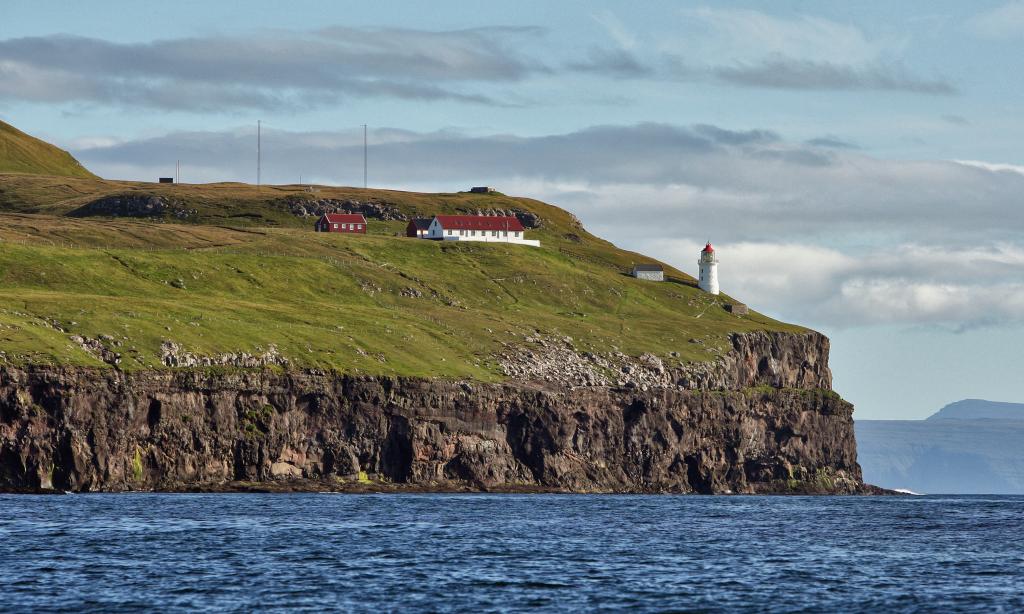
Adventure-seekers willing to go beyond the quiet village paths of Nólsoy can set their sights on the remote Hungi Lighthouse, perched at the island’s southernmost point. The trek begins near the harbor and follows an unmarked, windswept route through grassy slopes and rocky outcrops. The round trip can take several hours, so it’s best tackled with ample daylight and sturdy footwear. As hikers press farther south, the landscape opens to dramatic sea views, with seabirds circling overhead and waves crashing against jagged cliffs below. There are no facilities along the trail—only unfiltered nature and the occasional sheep. Reaching the lighthouse feels like standing at the end of the world. The white structure, modest in size, is dwarfed by its surroundings but plays a crucial role in guiding ships along the North Atlantic routes. The solitude here is profound, making the effort to reach it deeply rewarding. On clear days, the view stretches all the way to Suðuroy. This is not a polished tourist path but an untamed adventure suited for those who value silence, remoteness, and the satisfaction of reaching a spot few travelers ever see.
Sip Faroese Whisky at Vestmanna Distillery

Tucked in a sheltered bay on Streymoy’s western coast, Vestmanna is best known for its bird cliffs—but it also boasts one of the Faroe Islands’ rising artisanal gems: the Vestmanna Distillery. This boutique operation crafts small-batch whisky that reflects the Faroes’ rugged environment and pure resources. Using water drawn from local springs and barley matured in the islands’ cool, damp climate, the distillery’s output is uniquely Faroese in character. Tours offer insight into the whisky-making process, from fermentation to cask aging, and culminate with a guided tasting session. Visitors learn how maritime air and temperature affect flavor, producing expressions that range from peaty and bold to smooth and mineral-rich. The setting is intimate, with dramatic fjord views outside and warm hospitality inside. The distillery also produces aquavit and seasonal spirits, adding variety to the tasting lineup. Whether you’re a connoisseur or casual visitor, sipping whisky while looking out at towering cliffs and seabirds is an experience that bridges culture, craft, and nature. For travelers interested in local flavors and slow travel, this stop offers more than a drink—it offers a taste of the Faroes’ evolving identity.
Drive Eysturoy Tunnel with Sculptural Art Roundabout
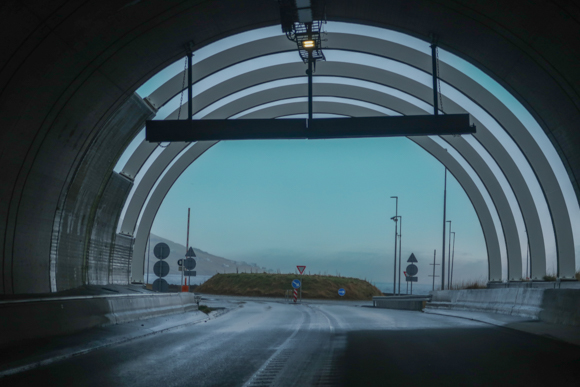
Connecting the islands of Streymoy and Eysturoy beneath the sea, the Eysturoy Tunnel isn’t just an engineering feat—it’s a celebration of art, design, and infrastructure. At over 11 kilometers long, this subsea tunnel houses a glowing sculptural roundabout at its center, featuring artwork by Tróndur Patursson. The installation symbolizes the flow of time and the movement of tides, with light reflecting off curved panels like shimmering waves. As drivers approach the roundabout, the road widens and the tunnel briefly transforms from pure utility into an immersive, gallery-like experience. The effect is mesmerizing—unexpected and almost surreal. Opened in 2020, the tunnel has significantly shortened travel time between key towns and fostered economic connection while attracting global attention for its artistic innovation. It’s fully safe for everyday use, with ventilation, lighting, and road conditions maintained to high standards. GPS navigation leads drivers seamlessly through, but many pause at the entrance to appreciate what they’re about to experience. It’s rare for daily travel to include an encounter with public art beneath the Atlantic, and this tunnel quietly redefines how infrastructure can inspire wonder as well as convenience.
Explore Hidden Islets by Kayak

Beyond the main islands, a network of secret islets, sea stacks, and sheltered coves wait to be explored by kayak. Setting off from villages like Eiði, Fuglafjørður, or Hvalba, paddlers can glide through glassy waters into narrow channels and lagoons invisible from land. These trips—whether self-guided or led by experienced local outfitters—often include sightings of puffins, cormorants, and even curious seals. Some routes pass under arching sea bridges or through rock formations carved by centuries of ocean force. The experience is quiet and meditative, punctuated only by paddle strokes and the call of seabirds. Kayaking in the Faroes doesn’t require elite skill levels; many areas are protected from open-sea swells and accessible to beginners with guidance. Equipment rentals include dry suits and safety gear to navigate chilly waters comfortably. The perspective gained from sea level is incomparable—cliffs rise like fortresses, and green hills roll endlessly above. For travelers looking to feel fully immersed in the landscape without the crowds, a kayaking adventure through hidden islets delivers both tranquility and discovery. It’s a way to witness the Faroes’ raw beauty from a vantage point few ever reach.
Dine at Michelin-Starred KOKS in Remote Leynavatn

Dining in the Faroe Islands reaches its pinnacle at KOKS, the world-renowned, Michelin-starred restaurant set amid the stark beauty of Leynavatn. Far removed from city bustle, KOKS crafts its tasting menus with ingredients sourced from the archipelago’s windswept terrain and frigid waters. Each course tells a story—fermented lamb, sea urchin, wind-dried fish—paired with wines and juices chosen to complement the wild flavors. The restaurant’s rustic building is set beside a lake, surrounded by hills and quietude, allowing nature to be both backdrop and ingredient. Diners often arrive via gravel roads or coordinated shuttles, adding to the journey-like feel of the experience. Inside, the ambiance is intimate and warm, with minimalist Faroese design letting the cuisine shine. KOKS doesn’t just serve meals—it curates a sensory expedition through Nordic terroir. The staff introduces each dish with insight into its origin and preparation, making the meal feel personal and connected. Reservations are essential, often booked months in advance, and dietary preferences are thoughtfully accommodated. This culinary destination has elevated the Faroes onto the global gastronomy map, providing an unforgettable conclusion—or highlight—to any Faroe Islands itinerary.
